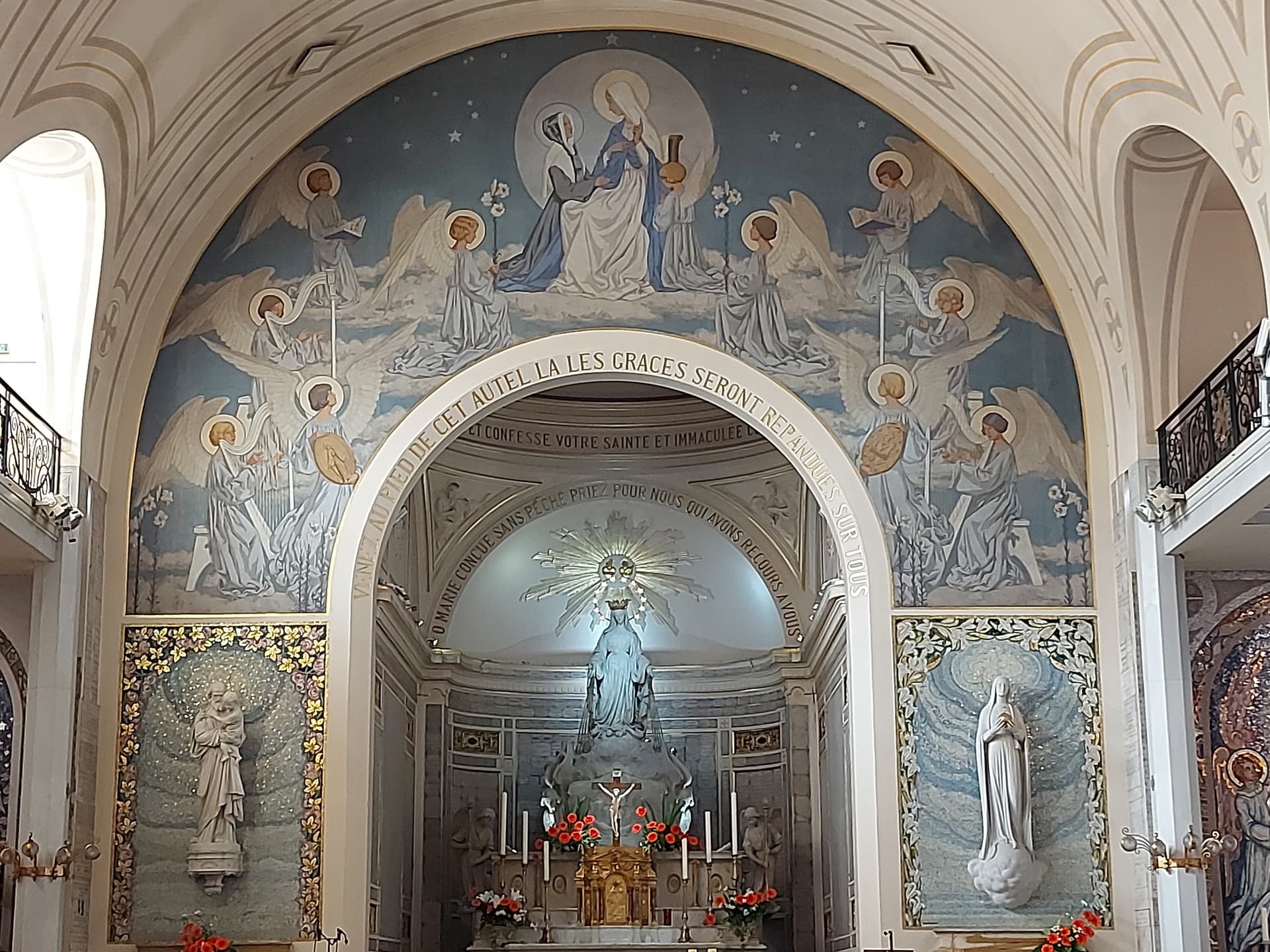Audio GuideChapel of Our Lady of the Miraculous Medal
Chapelle Notre-Dame-de-la-Médaille-Miraculeuse
Intimate art nouveau chapel associated with Marian apparitions & housing several saints' relics.
Chapelle Notre-Dame-de-la-Médaille-Miraculeuse stands on one hundred forty Rue du Bac in Paris, France. It was built by order of King Louis XVIII in one thousand eight hundred thirteen and was originally dedicated to the Sacred Heart of Jesus in one thousand eight hundred fifteen. Over time, the chapel has become a treasured landmark, attracting visitors eager to learn about its rich history and spiritual legacy.
The chapel’s design carries the graceful touch of the neoclassical style. Its evolving architecture preserves elements from its early roots while embracing delicate details that speak of a deep reverence for the divine. Inside, the peaceful atmosphere is enhanced by historical artifacts and sacred relics.
A central story of the chapel is that of Catherine Labouré, a novice with the Daughters of Charity. In one thousand eight hundred thirty she experienced several Marian apparitions. During these visions, Catherine witnessed profound symbols. One such event showed the Blessed Virgin Mary, displaying her heart in white, red, and black as signs of peace, fervor, and love. The apparitions also included an image of Christ depicted as a crucified king.
Following these events, the Blessed Virgin Mary asked for a medal to be created bearing the inscription O Mary, conceived without sin, pray for us who have recourse to thee. This came to be known as the Miraculous Medal, notably used during a cholica epidemic in Paris. Today, the chapel preserves significant relics—the incorrupt body of Catherine Labouré in a glass coffin, the bones of Louise de Marillac, and the heart of Saint Vincent de Paul.
The Marian image was honored with a pontifical coronation by Pope Leo XIII in one thousand eight hundred ninety-seven, boosting the chapel’s status as a pilgrimage site. Managed by the Daughters of Charity of Saint Vincent de Paul, the chapel continues to serve as both a cultural gem and a sacred space for visitors from around the world.




